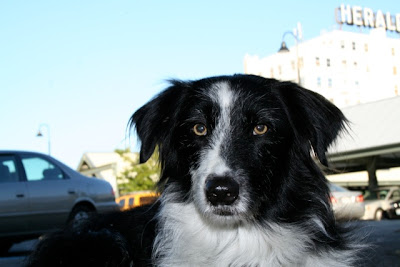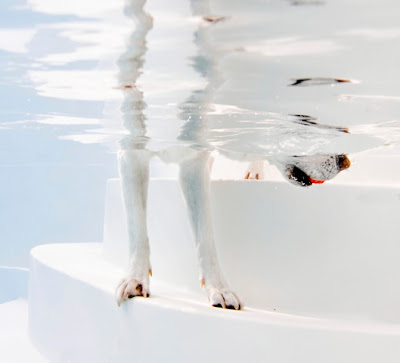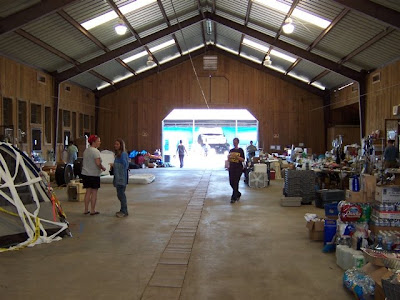 This is the photo of Walley that spoke to Alyssa Winters at the photo lab that day. All photos courtesy of Adrian Hitt Photography.
This is the photo of Walley that spoke to Alyssa Winters at the photo lab that day. All photos courtesy of Adrian Hitt Photography.About a quarter of us meet the love of our life in the workplace.
For Alyssa Winters, that’s exactly how it happened.
The Minnesota photo lab technician was having a regular workday in the mounting department watching the images roll by. And then one face stood out from all the others.
You could say his picture barked a thousand words.
It’s not like Alyssa doesn’t have her share of animals to gaze upon. Six days a week—24 hours a day—the White House Custom Color lab in Eagan processes images for professional photographers.
“Being an animal lover like myself, this happens about a million times a day with all the photos I see of dogs,” Alyssa said.
That’s what made her chance encounter with Walley even more random than it already was.
“There was something about Walley's photo. Just the look in his eyes, I can still feel it. I looked and looked and looked at that photo all day.”
Within hours, she had contacted the shutterbug named Adrian Hitt who had sent in the digital files depicting the Catahoula Leopard-American bulldog mix named for his walnut-colored coat.
In her spare time, the Tennessee-based photographer parlays her picture-making skills into raising public awareness for the plight facing millions of animals euthanized in the United States every year. Arming rescued animals with professional photographs of themselves helps puts their best paws forward to potential adopters.
In Walley’s case, it was a shoot in mid-January for a Nashville-based rescue group called Camp Chaos 37206 that landed his photos at White House Custom Color this past February. The dog had been rescued trotting down the street on New Year’s Eve with a rope around his neck.
Adrian suggested Alyssa get in touch with Camp Chaos.
“I worked with a volunteer named Jen and filled out the application and references. I had her become my friend on Facebook because we have another dog at home and I wanted her to see how his life was. It was hard with me being here and them being there. It was a huge trust building moment on both ends.”
A week and a half later, Alyssa was on a plane headed from the north to the south to meet Walley. And that night she brought him home.
“Walley has made me so happy. My husband is in love as well. He's also a huge animal lover and says that Walley was meant to be.”
Alyssa and her hubby aren’t the only ones thrilled with the new addition. Walley’s dog brother Maynard is overjoyed.
“He has been a huge happiness to Maynard,” Alyssa said. “They play together and take walks together and kiss and love each other. Maynard has always been social and I have wanted another dog for quite a while but it just never felt that right ’til I saw Walley.”
Alyssa didn’t just save Walley. She’s using his snuggly, calm personality to educate others about pit bulls, a group of dogs often unfairly maligned by the media.
“Everywhere I take him he gets noticed because he's so handsome and people are very curious about a 'pit bull' you know? So I take it as my chance to educate people about bully breeds and adoption as well.”
Now that’s what I call a Kodak moment.
 The atmosphere sparkled with love at first sight when Alyssa flew from Minnesota to Tennessee to meet Walley.
The atmosphere sparkled with love at first sight when Alyssa flew from Minnesota to Tennessee to meet Walley.






















































